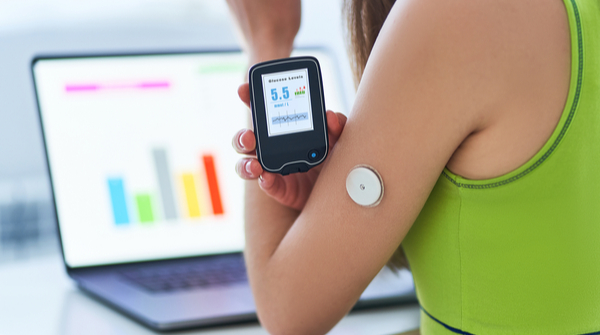Brittle diabetes, also known as unstable diabetes, is a condition where it becomes difficult to manage blood sugar levels. People with brittle diabetes go through frequent and extreme swings in blood glucose levels, causing hyperglycemia or hypoglycemia. Moreover, it is not considered to be a separate kind of diabetes but is an advanced complication of the disease.

Causes and Symptoms of Brittle Diabetes
Diagnosing brittle diabetes can be challenging, considering various other reasons for fluctuating blood sugar levels. If the normal glucose level in the human body is fluctuating wildly, the causes may include:
- Irregular glucome monitoring
- Lots of stress
- An eating disorder
- Your intestines struggle to absorb nutrients.
- Celiac disease
- Gastroparesis- a condition that slows down or stops the emptying of food from your stomach into your intestines.
- Insulin sensitivity.
What are the Risk Factors Involved with Brittle Diabetes?
Brittle diabetes mostly occurs in people who have type 1 diabetes. While type 1 diabetes involves blood sugar levels that fluctuate between high and low, it results in dangerous roller-coaster effects. The fluctuations in glucose levels can be rapid and unpredictable, causing dramatic symptoms.
The following risk factors for brittle diabetes are higher if you:
- Have hormonal imbalances
- Are overweight
- Have hypothyroidism (low thyroid hormones)
- Are in your 20s or 30s
- Have a high level of stress on a regular basis
- Have gastroparesis or celiac disease
How Brittle Diabetes Develops? Out of the various causes, psychological issues and inconsistent digestion as a result of nerve damage account for most cases. Often associated with stress, depression, and other psychological issues, brittle diabetes leads to acute and temporary insulin resistance. The body does not respond to insulin, and this can come on and disappear very quickly without warning. This can lead to distinct challenges when needing to judge insulin doses.
Treatment for Brittle Diabetes

Continuous glucose monitoring
Conventionally, diabetes management involves regular blood sugar testing. However, people with brittle diabetes need to track their sugar levels more often than usual.
A sensor is placed under your skin in continuous glucose monitoring (CGM). This sensor constantly tracks glucose levels in your tissues and alerts you when your levels get too high or too low. This helps you to treat your blood sugar issues right away. If you think a CGM system might work well for you, talk to your doctor to find out more.
Subcutaneous insulin pump
For people with brittle diabetes, the most important goal is to better match the amount of insulin they receive to how much they need at any specific time. This is where a subcutaneous insulin pump comes into light. This pump is the most effective treatment for brittle diabetes.
This little pump is kept in your belt or pocket. The needle is connected to a narrow plastic tube attached to the pump. Moreover, the needle is inserted beneath your skin. The gadget is worn 24 hours a day and constantly delivers insulin into your system. It helps maintain stable insulin levels, which in turn helps maintain balanced glucose levels.
Read More: Diabetic Nephropathy: Prevention and Treatment
Brittle diabetes is not lethal, you and your diabetes specialist can work together and manage your blood sugar levels. However, you should also know that managing any kind of diabetes requires constant testing. Get yourself an easy-to-use glucometer to keep track of your numbers.
For more diabetes-related information, download the BeatO App.




